

Yoga is an ancient practice that offers numerous benefits for individuals of all ages and abilities. For children with scoliosis, a condition that causes the spine to curve, practicing yoga can be particularly beneficial. This article will explore the benefits of yoga for children with scoliosis and provide guidance on how to practice yoga safely and effectively.
Scoliosis is a condition that causes the spine to curve to one side, resulting in an S or C shape. The causes of scoliosis are not fully understood, but it can develop at any age and affects both males and females. Symptoms can include uneven shoulders, hips, or waist, and pain or discomfort in the back.
Improved posture and alignment: Yoga poses can help to improve posture and alignment, which is particularly beneficial for children with scoliosis.
Increased flexibility: Yoga poses can help to increase flexibility in the muscles surrounding the spine, which can help to alleviate pain and discomfort.
Strengthened muscles: Yoga poses can help to strengthen the muscles that support the spine, which can help to prevent further curvature.
Reduced stress and anxiety: Yoga is known for its ability to reduce stress and anxiety, which can be particularly beneficial for children with scoliosis who may experience emotional distress due to their condition.
Consult with a healthcare provider: Before beginning any new exercise program, it is important to consult with a healthcare provider, particularly for children with scoliosis.
Focus on alignment: When practicing yoga poses, it is important to focus on proper alignment to ensure that the spine is not further curved or strained.
Avoid certain poses: Some yoga poses, such as twists, may not be appropriate for children with scoliosis. It is important to work with a qualified yoga instructor who can provide modifications or alternatives.
Practice regularly: Consistent practice is key to seeing the benefits of yoga for children with scoliosis. It is recommended to practice at least 2-3 times per week.
_optimized.webp)
Start on your hands and knees with your wrists under your shoulders and your knees under your hips. As you inhale, arch your back and lift your tailbone and head towards the ceiling (Cow Pose). As you exhale, round your spine and bring your chin towards your chest (Cat Pose). Repeat for several rounds of breath.
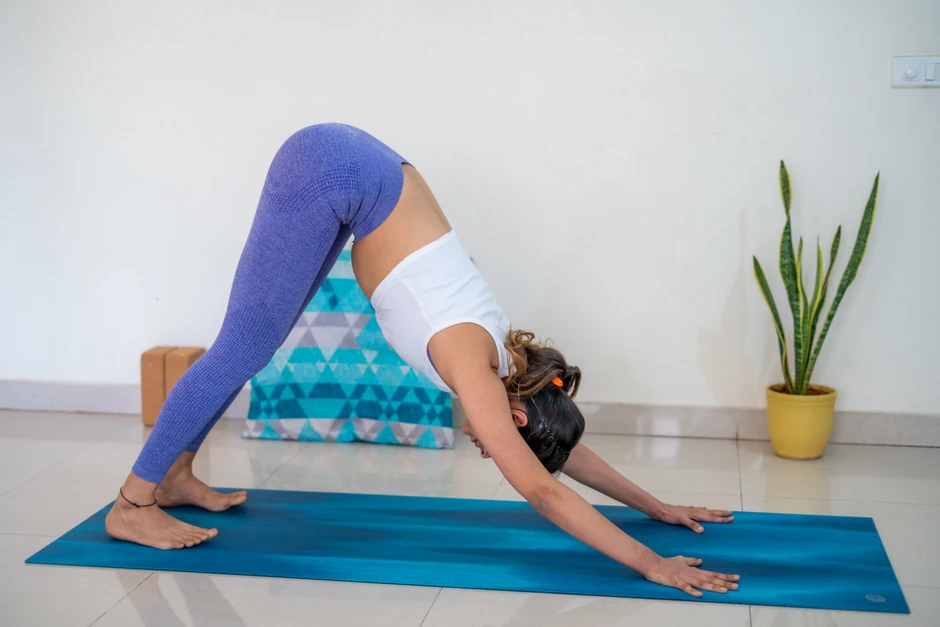
Start on your hands and knees with your wrists under your shoulders and your knees under your hips. Tuck your toes under and lift your hips up and back, straightening your arms and legs. Press your hands and feet into the ground and lengthen your spine. Hold for several breaths.
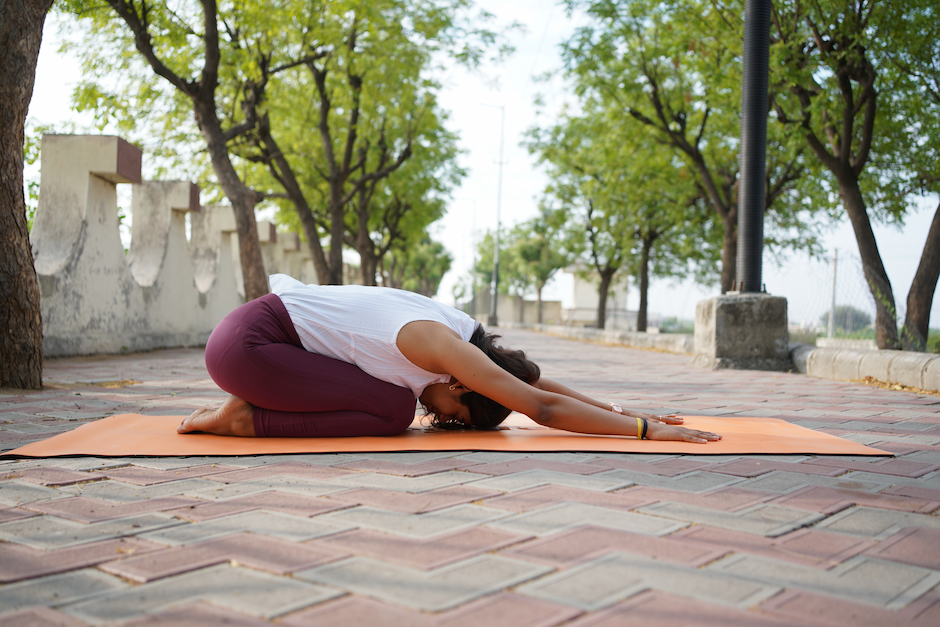
From Downward Facing Dog, lower your knees to the ground and sit back onto your heels. Reach your arms out in front of you and rest your forehead on the ground. Take several deep breaths.
_optimized.webp)
Stand with your feet about 3-4 feet apart. Turn your right foot out 90 degrees and your left foot in slightly. Reach your right arm out towards your right foot and place your hand on your shin, ankle, or the floor. Reach your left arm up towards the ceiling. Hold for several breaths and then repeat on the other side.
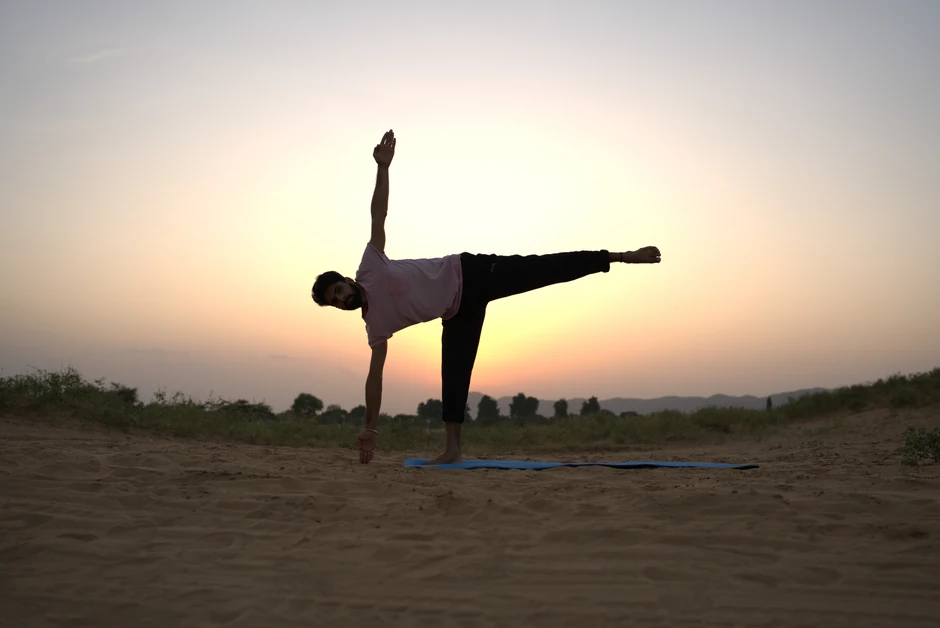
From Triangle Pose, place your right hand on your right hip and shift your weight onto your right foot. Lift your left leg up behind you and reach your left arm up towards the ceiling. Hold for several breaths and then repeat on the other side.

Lie on your stomach with your hands under your shoulders. As you inhale, lift your chest off the ground and straighten your arms. Keep your shoulders away from your ears and hold for several breaths.
Lie on your back with your legs straight and your arms at your sides. Lift your chest and place the top of your head on the ground. Reach your arms out behind you and hold for several breaths.
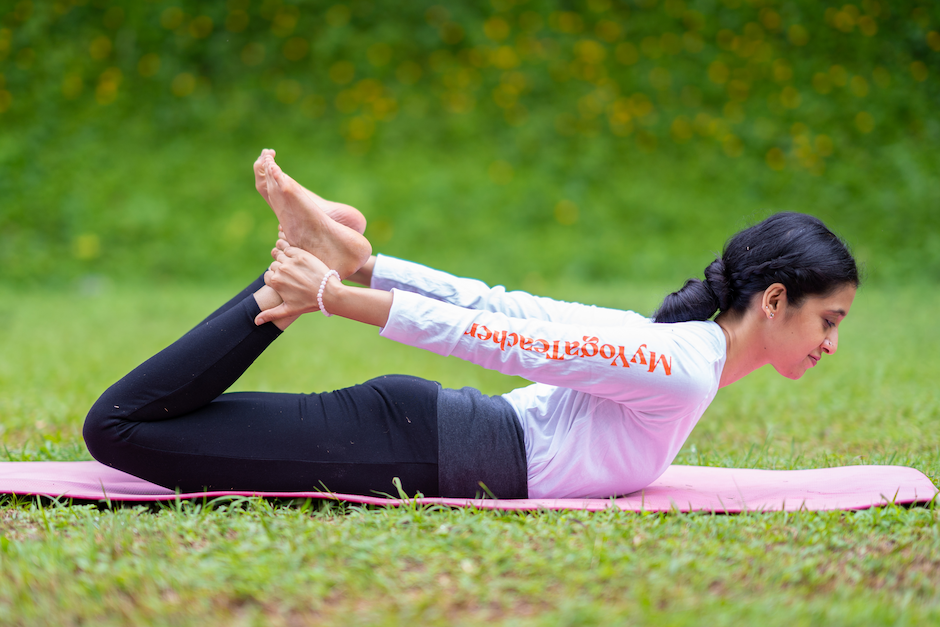
Lie on your stomach with your arms at your sides. Bend your knees and reach your hands back to grab your ankles. As you inhale, lift your chest and legs off the ground. Hold for several breaths.

Lie on your back with your knees bent and your feet hip-distance apart. As you inhale, lift your hips up towards the ceiling. Interlace your fingers underneath your back and straighten your arms. Hold for several breaths.
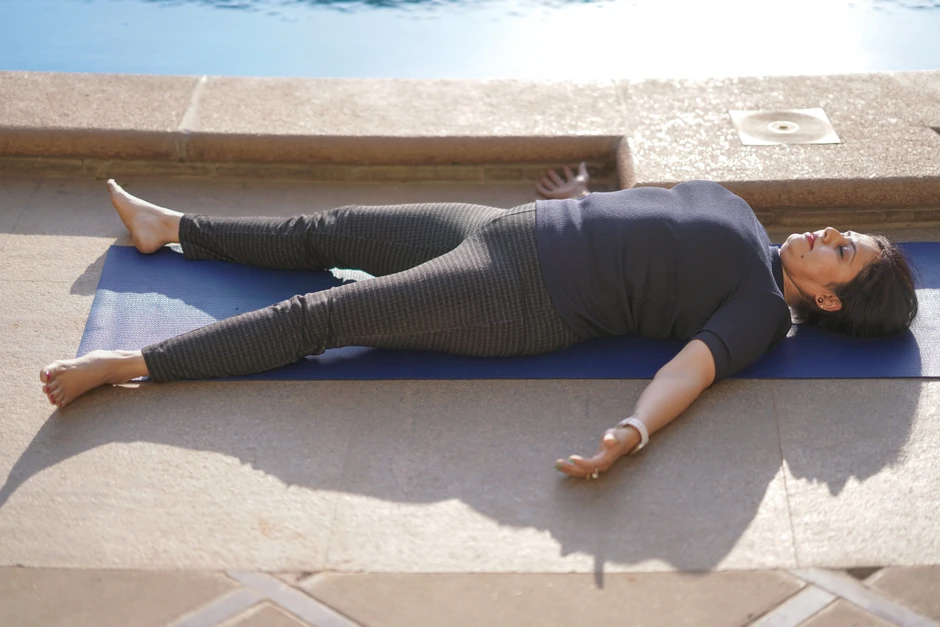
Lie on your back with your arms at your sides and your legs straight. Close your eyes and relax your entire body. Stay in this pose for several minutes.
Consult with a medical professional: Before beginning any yoga practice, it's important to consult with a doctor or physical therapist to ensure that yoga is safe and appropriate for your child's specific condition.
Work with a qualified yoga teacher: It's important to work with a yoga teacher who has experience working with students with scoliosis. A qualified teacher can provide modifications and adjustments to ensure your child's safety and comfort.
Avoid deep backbends: Deep backbends such as camel pose and wheel pose can put too much pressure on the spine and should be avoided or modified for students with scoliosis.
Focus on lengthening the spine: In general, yoga poses that focus on lengthening the spine, such as mountain pose and downward-facing dog, can be beneficial for students with scoliosis.
Use props: Props such as blocks, straps, and blankets can help students with scoliosis to find proper alignment in yoga poses.
Avoid twisting poses: Twisting poses can also put pressure on the spine and should be avoided or modified for students with scoliosis.
Listen to the body: It's important for students with scoliosis to listen to their bodies and not push themselves too hard in yoga practice. Encourage your child to take breaks and modify poses as needed.
Yes, with proper management and treatment, people with scoliosis can live a long and healthy life. Regular check-ups, physical therapy, and exercise can help manage the symptoms and prevent the curve from worsening.
Yoga can be an effective way to manage scoliosis symptoms and improve posture, flexibility, and overall well-being. Specific yoga poses and sequences can help strengthen the muscles supporting the spine and alleviate pain.
People with scoliosis should avoid certain yoga poses that can exacerbate the spinal curve or cause pain. These include forward bends, backbends, and twisting poses that put pressure on the spine. It's important to work with a qualified yoga instructor who can modify poses and provide guidance on safe practice.
Exercise is important for scoliosis because it can help strengthen the muscles supporting the spine, improve flexibility, and prevent the curve from worsening. Physical therapy and targeted exercise programs can help manage scoliosis symptoms and improve overall health and well-being.

Receive personalized guidance tailored to your unique fitness goals, live with a dedicated coach—no credit card required.